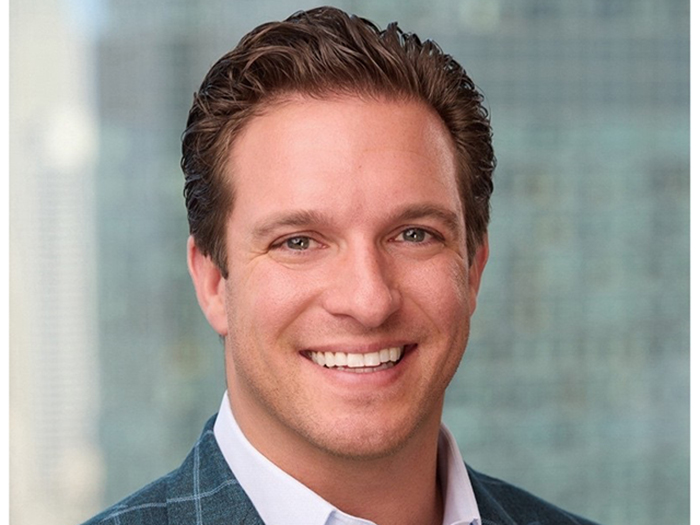Conference Update
Fresh Perspectives on NWCDC Advisory Board
The 23rd annual National Workers’ Compensation and Disability Conference® & Expo takes place Nov. 19-21 at the Mandalay Bay Resort and Casino in Las Vegas. The conference is produced by LRP Publications, which also publishes Risk & Insurance® and the Workers’ Compensation Report.
 Representatives from the employer, insurance, and legal communities are the newest members of the board of advisors for this year’s conference. Conference organizers rely on the board to help design the program.
Representatives from the employer, insurance, and legal communities are the newest members of the board of advisors for this year’s conference. Conference organizers rely on the board to help design the program.
Board members are carefully reviewing and evaluating more than 200 proposals submitted for the 31 breakout sessions to ensure the best program for attendees. Below are insights into the newest board members.
John T. Leonard
President and CEO, MEMIC, Portland, Maine
The low investment returns over the last several years are having a positive effect in one respect. Many insurers have had to take a different tack.
“I’d be quick to characterize it as a positive marketplace,” Leonard said. “Most carriers are behaving well in terms of pricing discipline, and as long as that continues, it will have a positive impact on industry results.”
Leonard says for companies that have always tried to make an underwriting profit, knowing others are having to now do the same puts everyone on a level playing field.
“The emphasis is on carrier discipline in terms of underwriting performance and the ability to maximize relationships with accounts through loss control or claims services,” he said. “It’s not about price but delivering value for the policyholders.”
Forces outside the insurance industry are a concern, however. Next month, Leonard will speak to members of Congress about extending the Terrorism Risk Insurance Act.
“I think right now what’s going on in D.C. is that it’s viewed more as an insurance industry problem,” Leonard said. “As time moves on, you are going to see more and more business groups such as the Chamber of Commerce nationally and local chambers will get into the battle as well. This is not an insurance company problem; it’s an economy problem.”
Leonard believes the program will ultimately be extended; most likely with tweaking that favors the government. In the meantime, carriers are struggling with what to do now.
“The problem is, policies being written now, for example, an underwriter at MEMIC writes a policy for March 1, but it doesn’t expire until the end of next February,” he said. “If there is no TRIA reauthorization, that policy has two months of exposure. As the year goes on, it gets even more complicated.”
But Leonard believes there won’t be any action on TRIA until after the November elections since legislators think there is no need to act on a program that doesn’t expire until the end of the year. While that’s creating challenges within the workers’ comp system, the alternative is much worse.
“If they don’t reauthorize TRIA, it is going to be chaos. Not to the insurance industry alone, for the U.S. economy,” he said. “That’s what I’m going to tell Congress at the end of April.”
Rebecca Shafer
President, Amaxx Risk Solutions Inc., Hartford, Conn
For 25 years, Shafer, an attorney and risk consultant, has helped companies reduce their workers’ comp costs by up to 50 percent. Shafer is passionate about “helping employers determine the exact cost drivers of their workers’ comp programs and integrating claims administration more effectively with internal operations.” In addition to her role with Amaxx, she serves on the LexisNexis executive committee and is the author of Your Ultimate Guide to Mastering Workers Comp Costs: Reduce Costs 20%-50%.
She says one of the biggest challenges employers face is the new workforce — temporary workers, contractors, and others who work away from corporate facilities. “The new workplace workforce is a huge issue, and employers really don’t know how to deal with it,” she said. “A lot of companies have employees traveling all over the country or working remotely; they have sales forces traveling who basically live on the road.”
Shafer said a home-based worker tripped over her dog and was given benefits for her injuries because the case was deemed work-related. That type of situation, she said, is fairly common.
“Employers are not having any input into the location and setting of the employee,” Shafer said. “But because they allow/encourage work from home, they are taking on all the risk.”
Another issue on her mind is chronic conditions/comorbidities such as the aging workforce, heart conditions, and mental health issues. She is hoping the Affordable Care Act may help.
“One good outcome of having more people covered is that may help treat some of the comorbid conditions because a tiny injury happening to a diabetic is all of a sudden a monstrous claim. So time out of work would be shortened,” Shafer said. “It’s permeating the entire country at this moment.”
Mark Sidney
Vice president of claims, Midwest Employers Casualty Co., (A W.R. Berkley Company), Chesterfield, Mo.
As the head of claims for one of the largest workers’ comp excess carriers, Sidney sees pain management as one of the primary challenges. Among his concerns is the exponential growth of the pain management industry.
“All of a sudden you have all these pain physicians,” he said. “There are a few good ones, but most of the ones we see are just a moneymaking machine. There doesn’t seem to be concern about the patient, about the amount of drugs, or the amount and efficacy of procedures. Many are completely resistant to any attempt to change the treatment course even when confronted with solid medical evidence.”
Sidney said the problem goes beyond just opioids.
“From a cost standpoint, the actual cost of opioids is less than 15 percent of the total cost of pain management,” he said. “The use of opioids drives a lot of those interventions because there are all these non-pain drugs for sleeplessness, constipation, etc.”
Another medical-related concern is the lack of shared decision-making on the part of the injured worker. He says it seems patients accept whatever their doctor says, perhaps more so in workers’ comp because it’s not necessarily their choice of physician in the first place, and they’re worried about continuing their benefits.
“There really isn’t a lot of discussion about potential side effects, about the chances of success,” he said. “It should change. There is a huge opportunity there.”
Sidney says companies, especially those with proprietary networks, could incorporate shared decision-making into their physician education and protocols for how the injured worker should be treated.
Finally, he says there should be more willingness to pay for alternative treatments that may be more effective and less costly than more traditional procedures.
“There’s still a philosophy within the workers’ comp claims handling industry that adjusters are prone to say no. ‘I want you to buy me a gym membership.’ ‘No.’ Or someone prescribes acupuncture or suggests that some psychological counseling might help the patient cope with their pain while they are healing, and the kneejerk reaction from the adjuster is ‘no, that doesn’t have to be paid for,’” he said. “But come and say you want a two-level laminectomy and fusion, and they say ‘sure.’ So they are willing to pay tens of thousands of dollars for a surgery that may not really be necessary rather than hundreds for an alternative that might avoid the surgery altogether.”
Patrick J. Walsh
Vice president and chief claims officer, corporate claims, Accident Fund Holdings Inc., Lansing, Mich.
With his more than 25 years of experience as a claims leader, Walsh believes claims professionals have a unique opportunity to help companies better understand the workers’ compensation marketplace. As he explains, their reach is wider than most others in the company.
“We talk to policyholders, claimants, risk managers, and agents and brokers more than anyone. Simply put, claims people have relationships with a lot more stakeholders,” Walsh said. “They have an opportunity and obligation to share what they are hearing with the company, which goes beyond the obvious day-to-day activities and tasks.”
One of the increasing concerns he sees is the ability of carriers to generate an appropriate return for their shareholder(s). In his view, claims leaders are in a unique position to contribute to the bottom line.
“The dynamic has shifted dramatically over the past several years from relying on investment income to generate appropriate returns to a model where long-term success requires generating an appropriate return based on underwriting results,” he explains. “Claims leaders need to understand this dynamic and ask ourselves how to achieve positive outcomes for injured workers while efficiently doing more with less.” One of the big issues for the industry has been the “talent shortage.” But Walsh believes it should not be a major challenge if the industry thinks differently.
“You should always be building talent from within. By doing so, you are building a model that is sustainable. This is a very attractive industry,” he says. “I’m proud of our industry and what we do and specifically what claims professionals do to help those who have gone through what can be very traumatic experiences. If we frame things in the right way and focus on the positive attributes of who we are and what we do, we can attract quality candidates who will drive the next generation of excellence in our industry.”
William Wainscott
Manager, workers’ compensation and occupational health, International Paper, Memphis, Tenn.
A combination of workforce longevity, work sites in remote areas, and a heavy manufacturing industry can lead to hefty challenges for a workers’ comp/occupational health professional. Among them is reeducating physicians.
“Paper mills are generally located in rural areas, so the medical community is rather small and it’s a community that treats everything,” Wainscott says. “We’re still struggling with getting local medical communities in our programs and getting them to understand the occupational side of treatment and them wanting to engage the employer and participate in our programs.”
Another struggle many employers face is the aging workforce. While International Paper is in the enviable position of having employees stay for their entire careers, older workers’ injuries tend to be more severe.
Wainscott is a proponent of integrating health and wellness programs. His focus is on trying to implement medical clinics in some of the company’s larger work sites “to remind employees about their medications and the importance of health and wellness, and help them monitor and manage their chronic conditions,” he said. “We are trying to get a more consistent occupational health platform. So if you work for us [and have a chronic condition], there is somebody there to monitor and help you deal with it.”
Equally important is having somebody act as a gatekeeper for employees’ health issues. The company has a wellness program under its group health insurance.
“That’s a key issue – getting somebody who says ‘you have this condition, here is a resource that might be able to help,’ or some ways to look at it and maybe motivate employees to get involved,” Wainscott said. “It’s a big challenge.”
Pamela R. Webster
Senior claims manager, Advance Auto Parts, Roanoke, Va.
Aging workers, especially those with preexisting conditions, is an issue for Advance Auto Parts. “We have quite an aging workforce in the field, specifically, with our mobile parts pro drivers,” Webster said.
Workers who deliver auto parts to the company’s 6,500 stores are an integral part of the business. The company’s recent acquisition of General Parts International/Car Quest added thousands of employees to transport auto parts from stores to facilities where the company has commercial accounts.
“That entails quite a bit of lifting, bending, and general handling of parts of all weights and sizes. So we see back, knee, and shoulder injuries,” Webster said. “Injuries are compounded when team members have preexisting conditions in addition to the normal aging process.”
Webster is a firm believer in a solid return-to-work program. Working with field case managers to design light-duty jobs, her company went to its distribution center and stores, viewed the various jobs, and measured and weighed parts to determine what physical tasks would be required for certain light-duty jobs. The program has had a 99 percent return-to-work rate for the past three years.
“We wanted to really define what types of jobs [returning injured workers] could perform within medical restrictions,” she said. “That lent us a great deal of consistency in our stores and distribution centers.”










